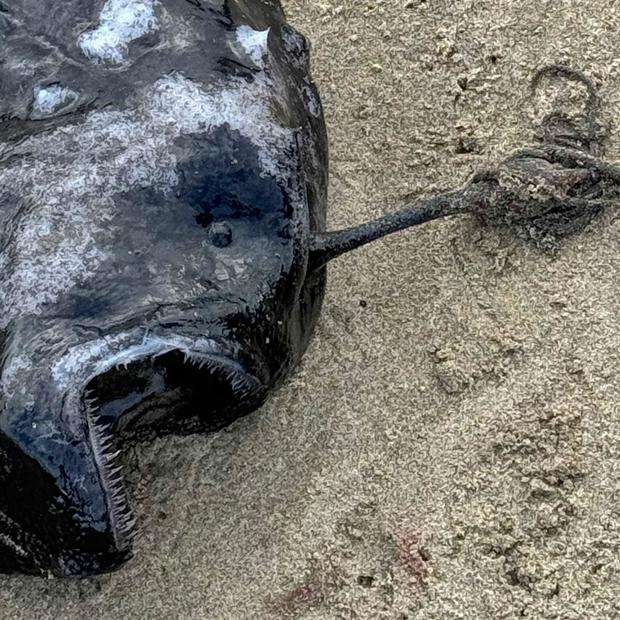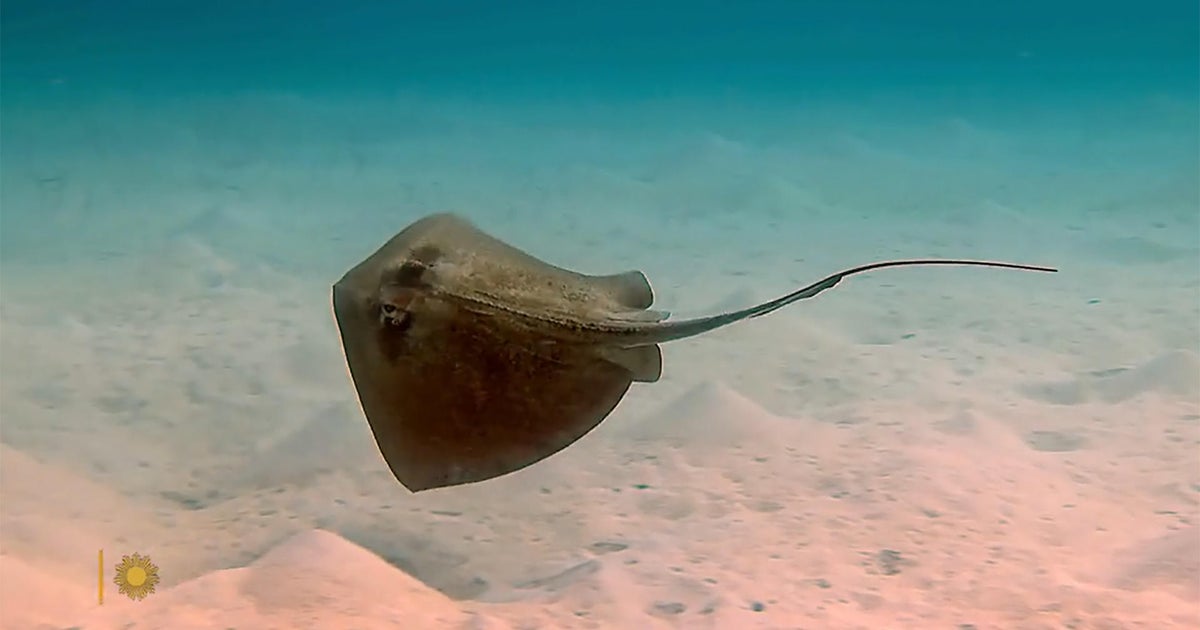"Unusually fascinating" footballfish that glows deep beneath the sea washes up on Oregon coast in rare sighting
An "unusually fascinating" fish that is known to emit a bioluminescent glow thousands of feet beneath the ocean's surface has appeared on the Oregon coast. A local aquarium that posted about the fish said that only dozens of the fish have ever been recorded and that this may be the first sighting of such a specimen in the state.
The unusual creature is a Pacific footballfish, which according to the Seaside Aquarium is a type of deep-sea angler that typically lives between 2,000 and 3,300 feet beneath the sea. The footballfish, similar to one depicted in the Disney movie "Finding Nemo," usually lives in complete darkness and is "rarely seen," the aquarium said, adding that just 31 of the animals have been recorded worldwide. This was was found on Cannon Beach, about 80 miles west of Portland.
"This is the first one reported on the Oregon Coast to our knowledge," the aquarium said. "Little is known about their life history but what is known is unusually fascinating."
According to the National History Museums of Los Angeles County, which acquired its own specimen of Pacific footballfish in 2021, the fish are known for having a bioluminescent lure that comes out of the top of their heads to attract prey. The 2021 discovery revealed that the lure isn't just bioluminescent, meaning it emits light through a bodily reaction, but biofluorescent, meaning that it generates its light from an external source. The revelation of the latter intrigued researchers, as the fish lives in ocean depths that do not receive light.
"What seems to be occurring is that the light produced by the bioluminescent lure (which occurs due to bioluminescent bacteria) is enabling this biofluorescence. We think that the combination of bioluminescence and biofluorescence in deep-sea animals is extremely rare, as it has only been documented in a few species (one other group of deep-sea fishes that aren't anglerfish, a jellyfish, and a siphonophore)," museum ichthyology curator William Ludt said. "However, this finding suggests that it may be more common than we think, and that it simply isn't examined because researchers assume fluorescence isn't occurring due to the lack of light in the deep oceans."
Oregon's Seaside Aquarium said that the fish will "eat anything that can fit into their mouths." Hunting is left up to female footballfish, they added, as males "are actually more like parasites."
"Males being 10 times smaller than females, find a female to fuse themselves to," the museum said. "They lose their eyes and internal organs, getting all their nutrients from their female partners. In return, they provide females with a steady source of sperm."







